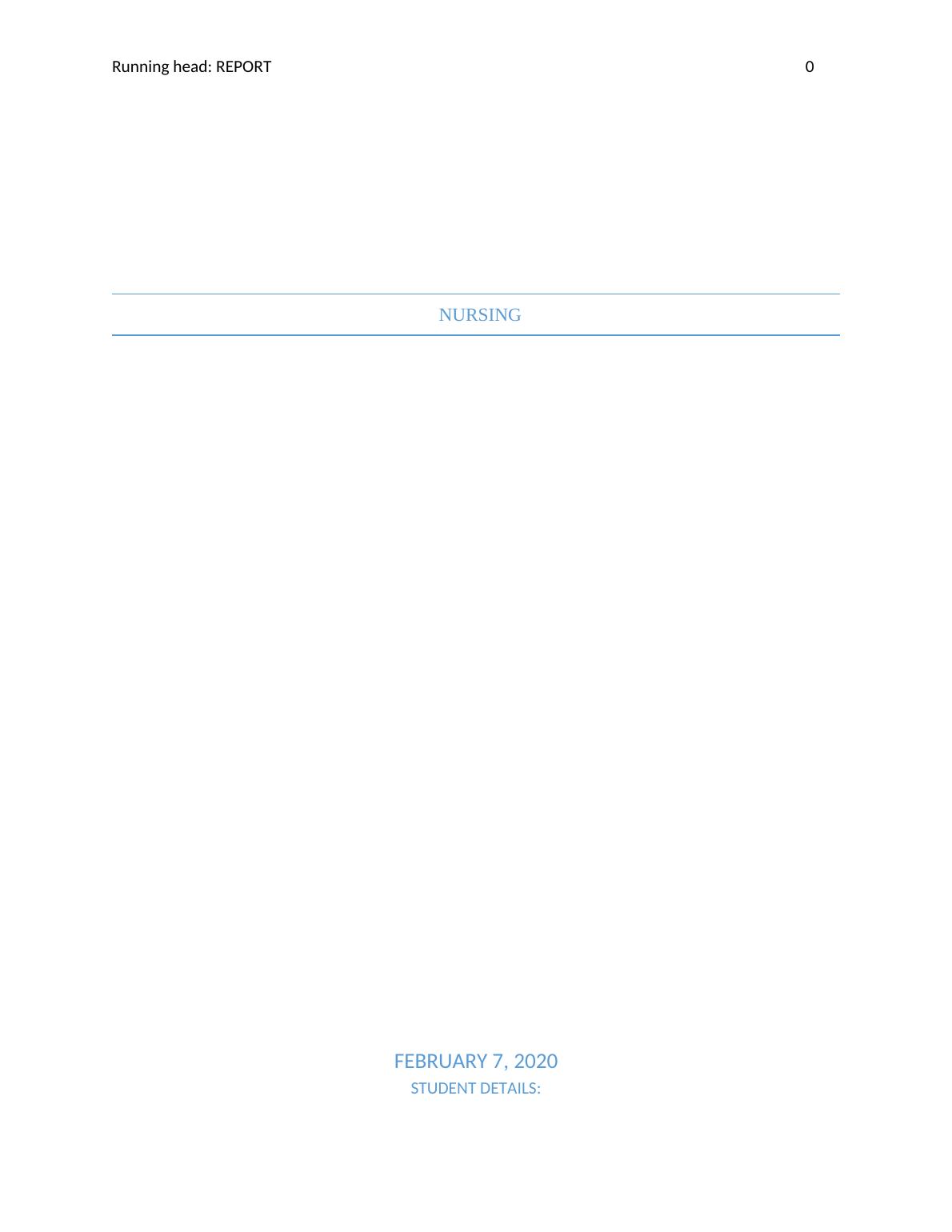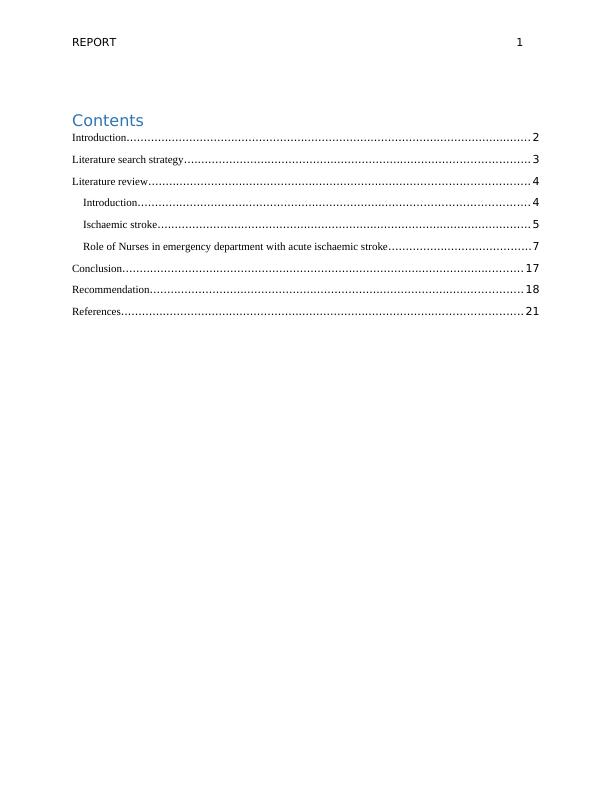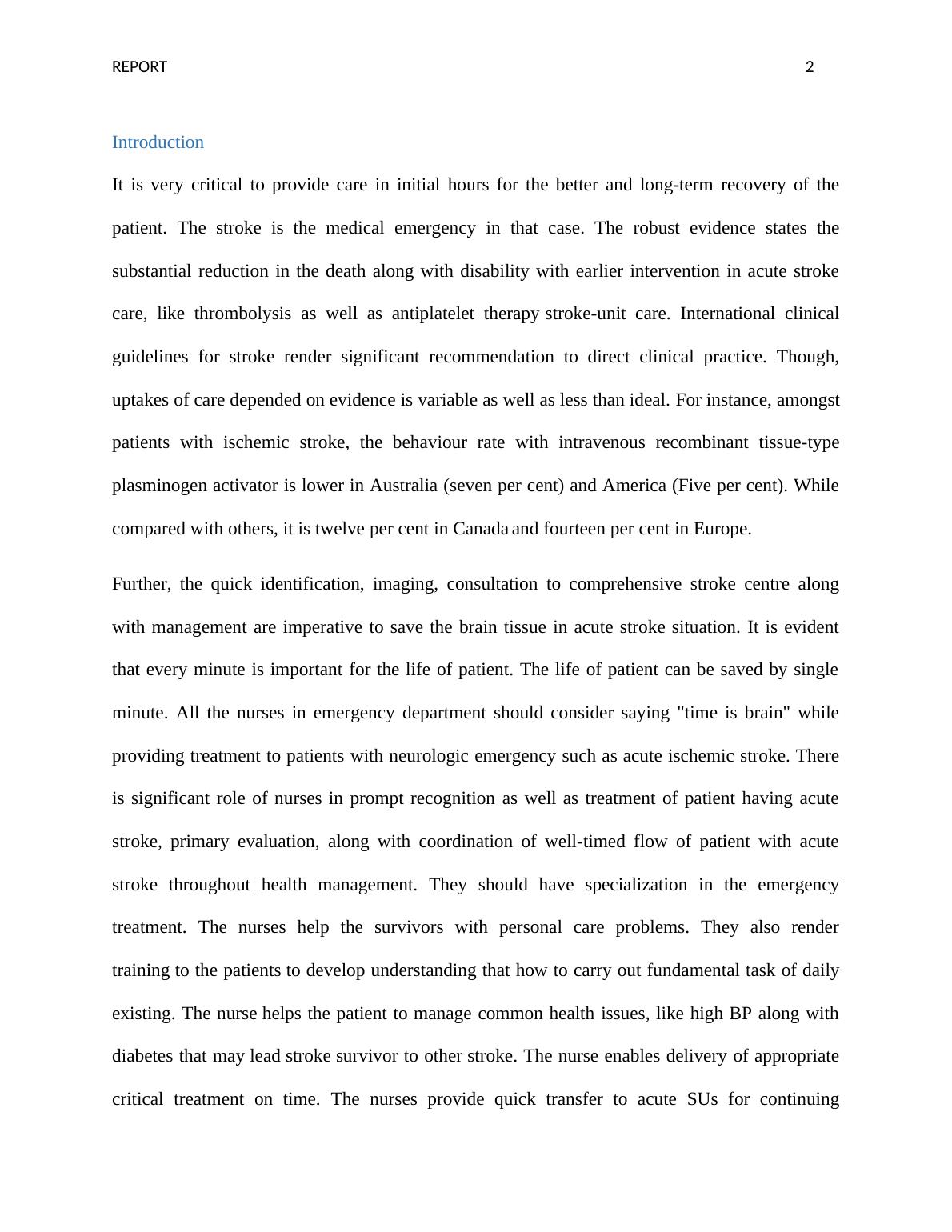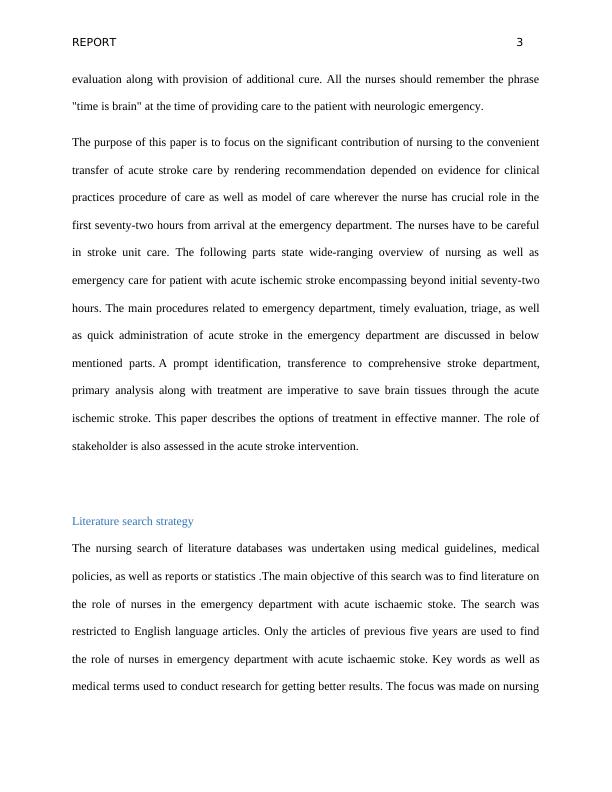Critical Nurses in Emergency Department with Ischaemic Stroke
Write an introduction of approximately 500 words providing a brief background of the topic or current situation, outline the main aim and focus of the essay. Then, write a literature search strategy of approximately 300 words, explaining the databases used, search restrictions, and keywords. Finally, write a literature review of approximately 3500-4000 words, covering the main points in depth.
Added on 2022-08-20
About This Document
Critical Nurses in Emergency Department with Ischaemic Stroke
Write an introduction of approximately 500 words providing a brief background of the topic or current situation, outline the main aim and focus of the essay. Then, write a literature search strategy of approximately 300 words, explaining the databases used, search restrictions, and keywords. Finally, write a literature review of approximately 3500-4000 words, covering the main points in depth.
Added on 2022-08-20
End of preview
Want to access all the pages? Upload your documents or become a member.






